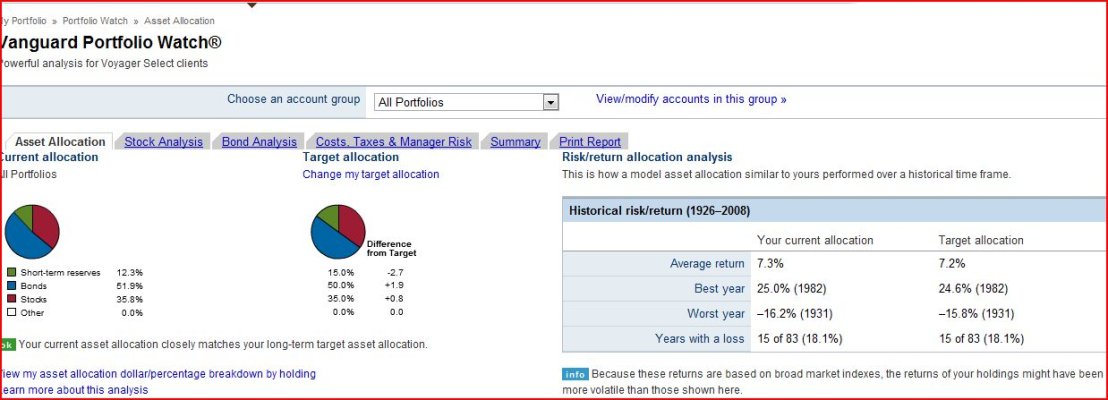People often talk about how many % their portfolio is making vs some benchmark, like S&P500. I wonder how you track it and more specifically, how do you account for
- additions
- withdrawals
- taxes
- dividends / distributions
For example, say you started Jan 1'2008 with $10,000 in your portfolio and you ended it with $12,000. During this time, you had:
- added $100 per month
- withdrew $1000 for some purchases
- paid $500 in portfolio-related taxes out of you liquid savings
- got $15 dividend 4 times a year
How much did your investment skills really give you for proper comparison with a benchmark?
I suppose one way would be to do as follows. Create a fake portfolio with your benchmark, and keep track of both portfolios:
- for every check you get from your job (if tracking your NW) or more generally, for every addition to your portfolio you are tracking, imagine you invested it in your benchmark (e.g. S&P500) with the closing price on the same date
- for every withdrawal, including taxes for the portfolio you are tracking, imagine you sold the benchmark at the closing price on the date before
- make sure your benchmark's dividends are reinvested and are paid on that number of shares you would have held at that ex-dividend date
- all dividends / distributions from your real portfolio have to stay "inside" it or you have to adjust for them as "withdrawals" otherwise.
I started doing something similar with my investment portfolio but quickly this became unmanageable for me even though I am not trading that often. In part, this was hard because figuring out taxes is somewhat of a pain. Also a simple S&P500 benchmark is not a good one since I have a high percentage of non large-cap non-US investments and tracking multiple indecies is harder with above approach. I suppose it's all doable in the end but quite time consuming.
What do you do?
- additions
- withdrawals
- taxes
- dividends / distributions
For example, say you started Jan 1'2008 with $10,000 in your portfolio and you ended it with $12,000. During this time, you had:
- added $100 per month
- withdrew $1000 for some purchases
- paid $500 in portfolio-related taxes out of you liquid savings
- got $15 dividend 4 times a year
How much did your investment skills really give you for proper comparison with a benchmark?
I suppose one way would be to do as follows. Create a fake portfolio with your benchmark, and keep track of both portfolios:
- for every check you get from your job (if tracking your NW) or more generally, for every addition to your portfolio you are tracking, imagine you invested it in your benchmark (e.g. S&P500) with the closing price on the same date
- for every withdrawal, including taxes for the portfolio you are tracking, imagine you sold the benchmark at the closing price on the date before
- make sure your benchmark's dividends are reinvested and are paid on that number of shares you would have held at that ex-dividend date
- all dividends / distributions from your real portfolio have to stay "inside" it or you have to adjust for them as "withdrawals" otherwise.
I started doing something similar with my investment portfolio but quickly this became unmanageable for me even though I am not trading that often. In part, this was hard because figuring out taxes is somewhat of a pain. Also a simple S&P500 benchmark is not a good one since I have a high percentage of non large-cap non-US investments and tracking multiple indecies is harder with above approach. I suppose it's all doable in the end but quite time consuming.
What do you do?

